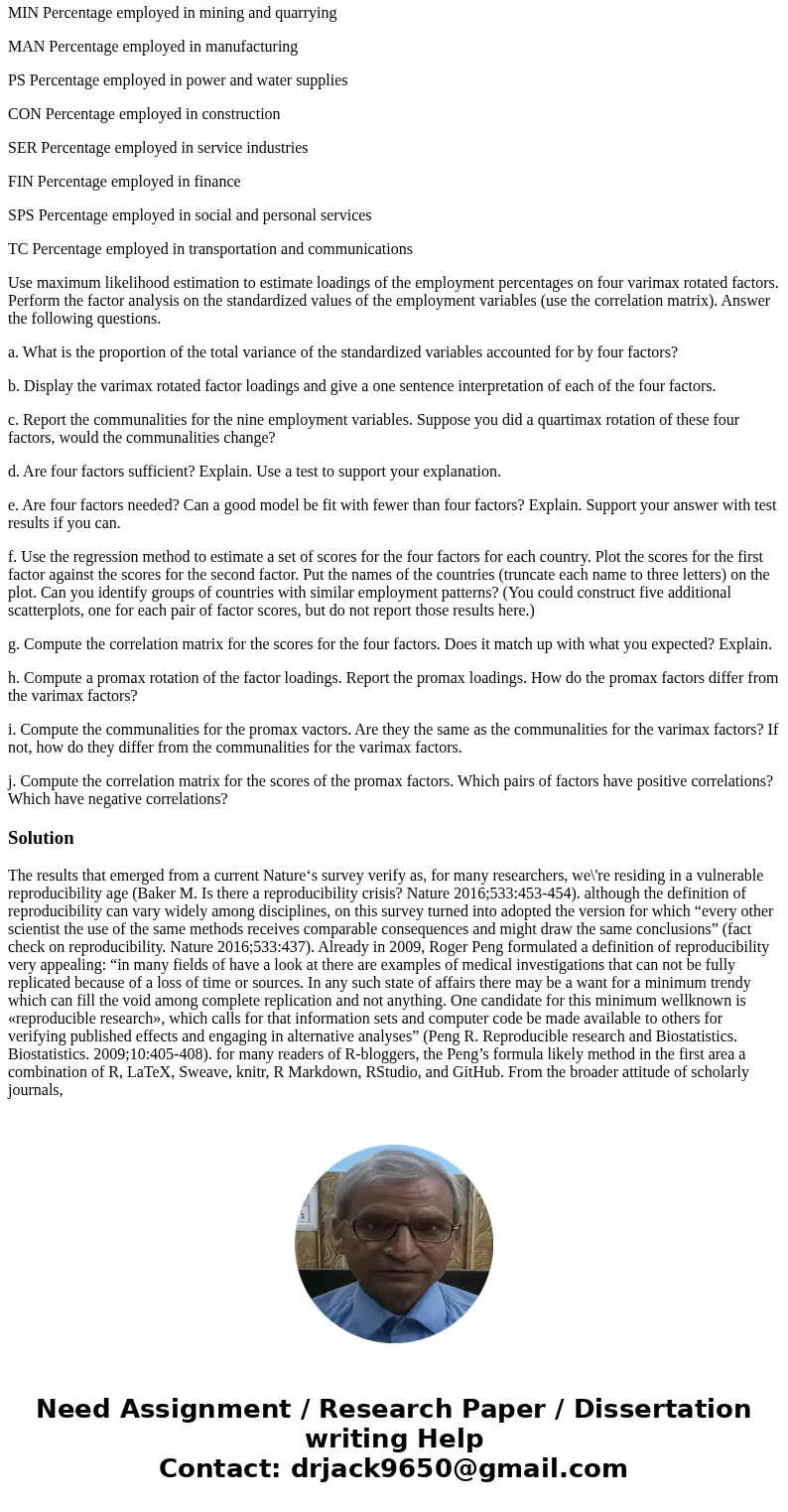Answer the following questions using the Statistical Package
Answer the following questions using the Statistical Package R. (What would the code be to answer the following questions, actual answers not needed, just the code).
Data on percentages of the workforce employed in nine different industries in thirty European countries are posted as EUworkforce.csv in the data folder of the course Blackboard page. The data are for years between 1989 and 1995. The data were adopted from a 1995 Euromonitor report and from the 2000 United Nations Statistical yearbook. There is one line of data in the data file for each country.
The variables appear in the following order
COUNTRY Name of the country
AGR Percentage employed in agriculture, forestry and fishing
MIN Percentage employed in mining and quarrying
MAN Percentage employed in manufacturing
PS Percentage employed in power and water supplies
CON Percentage employed in construction
SER Percentage employed in service industries
FIN Percentage employed in finance
SPS Percentage employed in social and personal services
TC Percentage employed in transportation and communications
Use maximum likelihood estimation to estimate loadings of the employment percentages on four varimax rotated factors. Perform the factor analysis on the standardized values of the employment variables (use the correlation matrix). Answer the following questions.
a. What is the proportion of the total variance of the standardized variables accounted for by four factors?
b. Display the varimax rotated factor loadings and give a one sentence interpretation of each of the four factors.
c. Report the communalities for the nine employment variables. Suppose you did a quartimax rotation of these four factors, would the communalities change?
d. Are four factors sufficient? Explain. Use a test to support your explanation.
e. Are four factors needed? Can a good model be fit with fewer than four factors? Explain. Support your answer with test results if you can.
f. Use the regression method to estimate a set of scores for the four factors for each country. Plot the scores for the first factor against the scores for the second factor. Put the names of the countries (truncate each name to three letters) on the plot. Can you identify groups of countries with similar employment patterns? (You could construct five additional scatterplots, one for each pair of factor scores, but do not report those results here.)
g. Compute the correlation matrix for the scores for the four factors. Does it match up with what you expected? Explain.
h. Compute a promax rotation of the factor loadings. Report the promax loadings. How do the promax factors differ from the varimax factors?
i. Compute the communalities for the promax vactors. Are they the same as the communalities for the varimax factors? If not, how do they differ from the communalities for the varimax factors.
j. Compute the correlation matrix for the scores of the promax factors. Which pairs of factors have positive correlations? Which have negative correlations?
Solution
The results that emerged from a current Nature‘s survey verify as, for many researchers, we\'re residing in a vulnerable reproducibility age (Baker M. Is there a reproducibility crisis? Nature 2016;533:453-454). although the definition of reproducibility can vary widely among disciplines, on this survey turned into adopted the version for which “every other scientist the use of the same methods receives comparable consequences and might draw the same conclusions” (fact check on reproducibility. Nature 2016;533:437). Already in 2009, Roger Peng formulated a definition of reproducibility very appealing: “in many fields of have a look at there are examples of medical investigations that can not be fully replicated because of a loss of time or sources. In any such state of affairs there may be a want for a minimum trendy which can fill the void among complete replication and not anything. One candidate for this minimum wellknown is «reproducible research», which calls for that information sets and computer code be made available to others for verifying published effects and engaging in alternative analyses” (Peng R. Reproducible research and Biostatistics. Biostatistics. 2009;10:405-408). for many readers of R-bloggers, the Peng’s formula likely method in the first area a combination of R, LaTeX, Sweave, knitr, R Markdown, RStudio, and GitHub. From the broader attitude of scholarly journals,


 Homework Sourse
Homework Sourse